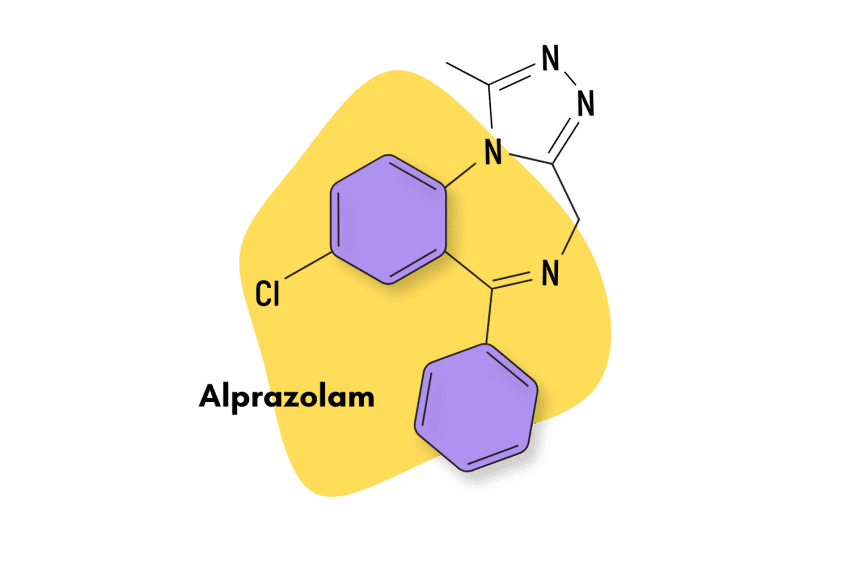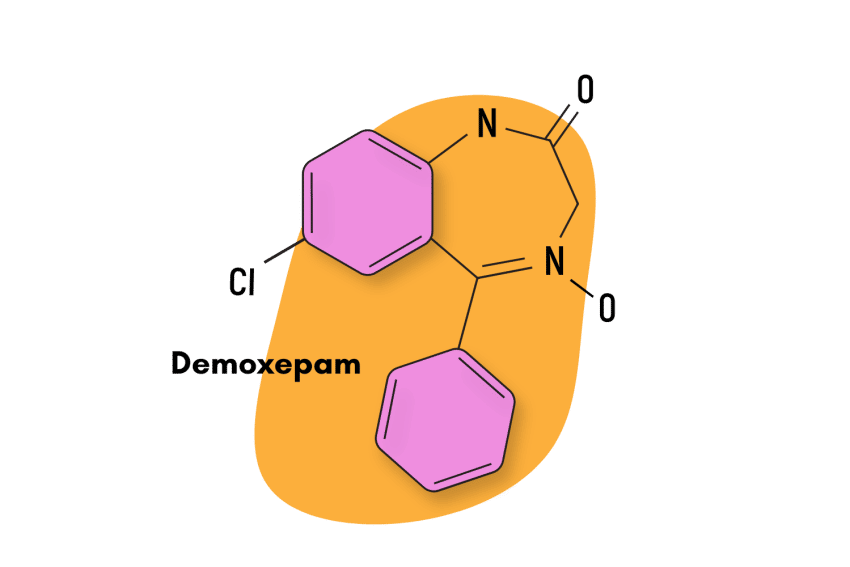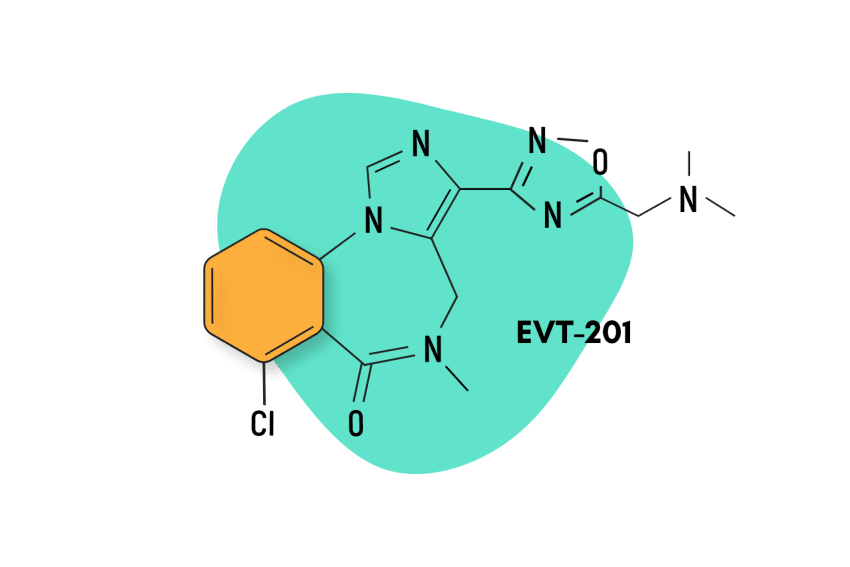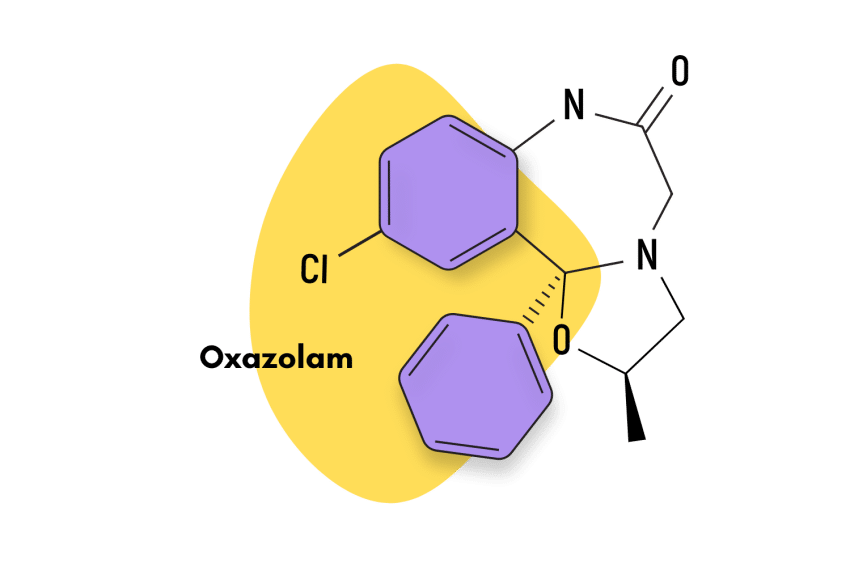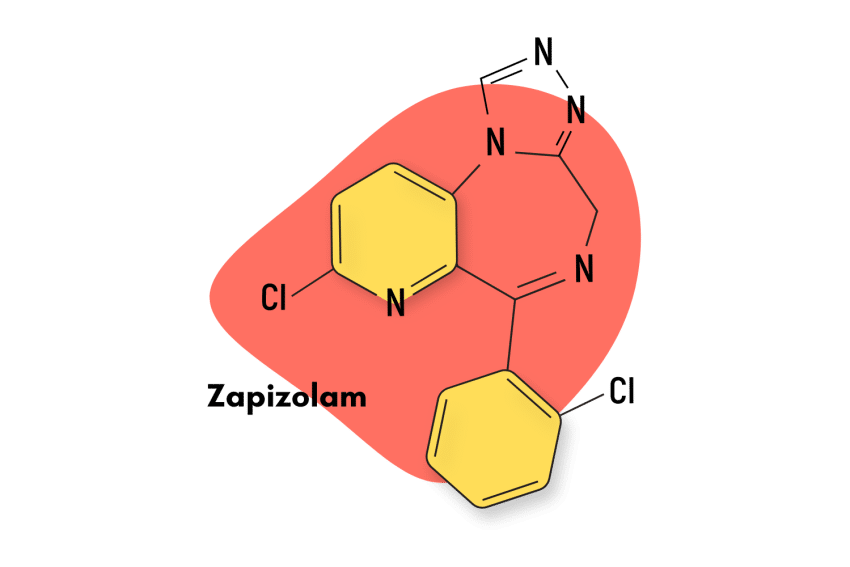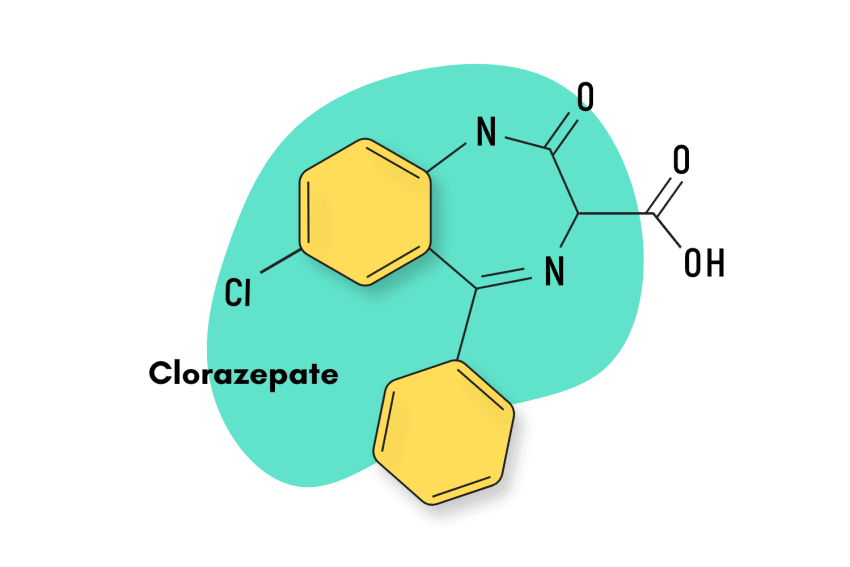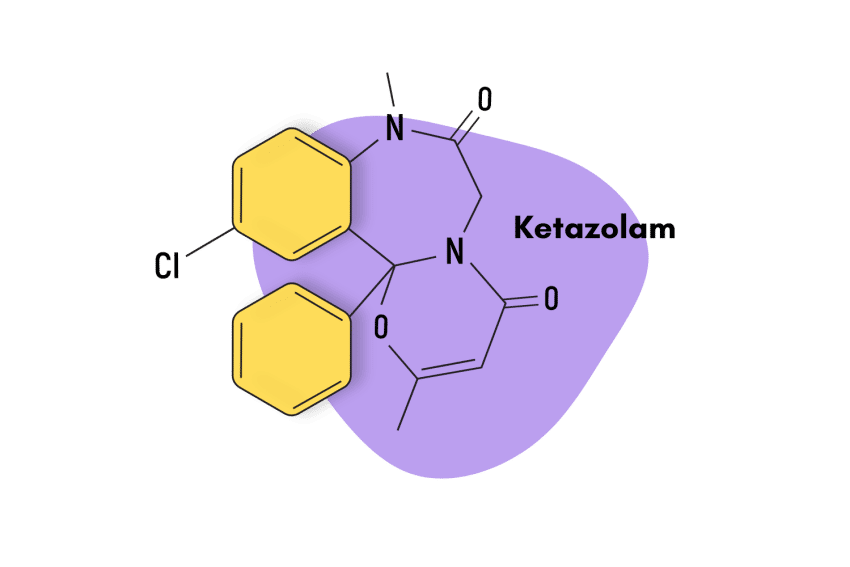Loprazolam (Dormonoct): Uses, Interactions, Safety, & Harm Reduction
Desperately need sleep and considering loprazolam? Natural supplements might be the way to go. 💤
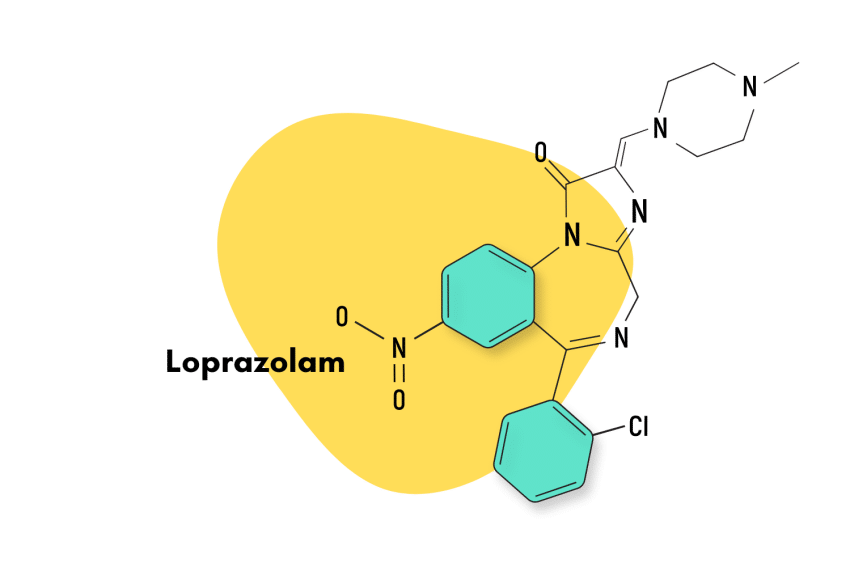
Loprazolam (Dormonoct) is a prescription benzodiazepine medication for sleep-related conditions.
Regarding its chemical structure, loprazolam is classified as a 1,4 benzodiazepine, which makes it similar to oxazepam (Serax) and temazepam (Restoril), two other commercially available benzodiazepines indicated for the treatment of insomnia. Other common members of this group include diazepam (Valium), bromazepam (Lectopam), clonazepam (Klonopin), lorazepam (Ativan), and others.
Despite having anticonvulsant, anxiolytic, and sedative properties characteristic of most benzodiazepine derivatives, loprazolam is only indicated for treating sleep disorders. There’s no evidence to suggest that, after being ingested at night, it may reduce daytime anxiety the following day [1].
One of the major advantages of loprazolam, when compared to other benzodiazepines which attempt to treat sleeping disorders, is the fact that, in relative terms, it has an intermediate elimination half-life rather than an extended one. This seven to eight-hour half-life is ideal as it minimizes the possibility of residual sedative effects — a problem patients who use longer-lasting hypnotics typically face [1].
Loprazolam Specs
| Status | Approved (Banned in the US) 💊 |
| Common Dosage | 0.5–1.5 mg |
| PubChem ID | 3033860 |
| CAS# | 61197-73-7 |
IUPAC Name: (2Z)-6-(2-chlorophenyl)-2-[(4-methylpiperazin-1-yl)methylidene]-8-nitro-4H-imidazo[1,2-a][1,4]benzodiazepin-1-one
Other Names: Dormonoct, Triazulenone, Havlane, Sonin, & Somnovit
Metabolism: Loprazolam’s metabolic process is hepatic.
Duration of Effects: Intermediate-Acting (6–20 hours). Loprazolam is slowly and variably absorbed following oral ingestion, with peak plasma concentrations usually reaching 2 to 5 hours in non-fasting subjects. Its plasma elimination half-life is usually about 7 to 8 hours.

Benzodiazepine Dosage Equivalency Calculator
**Caution:** Benzodiazepines have a narrow therapeutic window. Dose equivalents may not be accurate in higher doses.
This calculator does not substitute for clinical experience and is meant to serve only as a reference for determining oral benzodiazepine equivalence.
Please consult a medical practitioner before taking benzodiazepines.
How Does Loprazolam Work?
Loprazolam works much the same as most other benzodiazepines, which means its main mechanism of action is through its interaction with GABA receptors along the brain and central nervous system (CNS). GABA — or gamma-aminobutyric acid — receptors are the chief inhibitory neurotransmitters in the body, and what benzodiazepines do is potentiate their natural function in order to produce a generalized depressive state in the CNS. This effect then, in turn, is responsible for the anxiolytic, hypnotic, and muscle relaxant properties of benzodiazepines.
But how exactly do benzodiazepines interact with GABA receptors? Glad you asked.
There are two types of GABA receptors; benzodiazepines bind with GABA-A receptors and produce an allosteric effect that enhances their natural functioning [2, 3]. Once the benzodiazepine molecules bind to receptor sites in GABA-A transmitters, they have the effect of increasing the opening frequency of the chloride ion channel and thus allow the passage of negatively charged chloride ions into the cell.
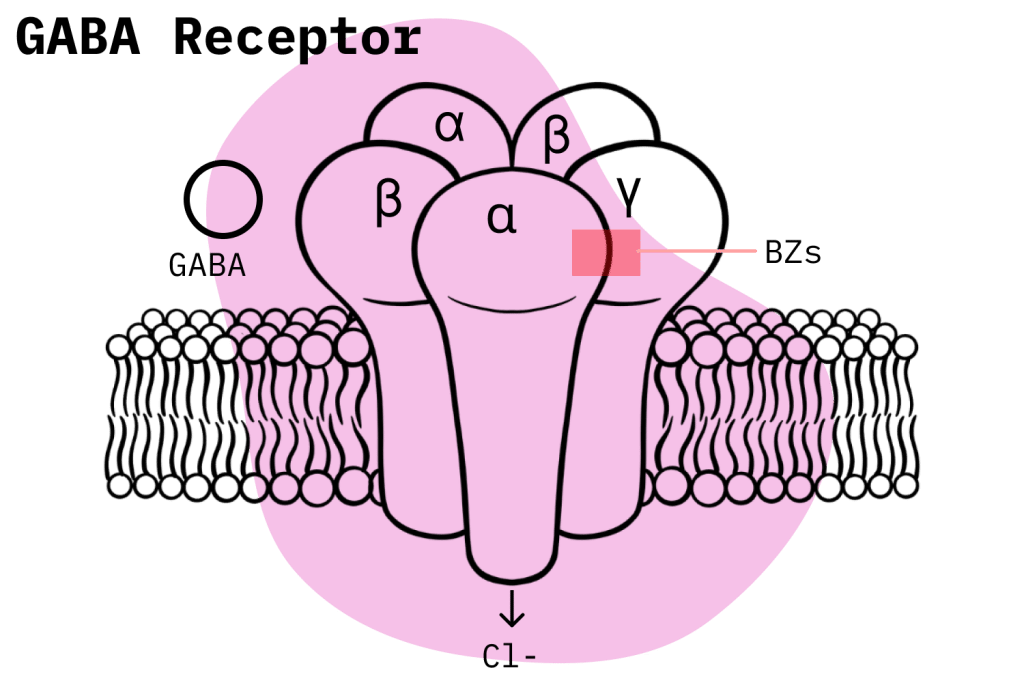
Once this happens, the cell’s electrical charge is altered and hyperpolarized. This new electrical valence makes it, so the cell is much less likely to fire an action potential, the electrical signals used by neurons in the CNS.
So, essentially, lowered action potential activity causes the reduced CNS activity that benzodiazepines are known for.
Is Loprazolam Safe? Risks & Side Effects
When it comes to benzodiazepines, a certain amount of risk must be considered, even if users do not engage in misuse. However, the danger level rises considerably when you factor in the potential for abuse.
Just look at the recent statistics regarding benzodiazepine-related drug fatalities in the United States. The problem has somewhat flown under the radar because of the opioid epidemic, but benzodiazepine abuse has now become a very serious problem.
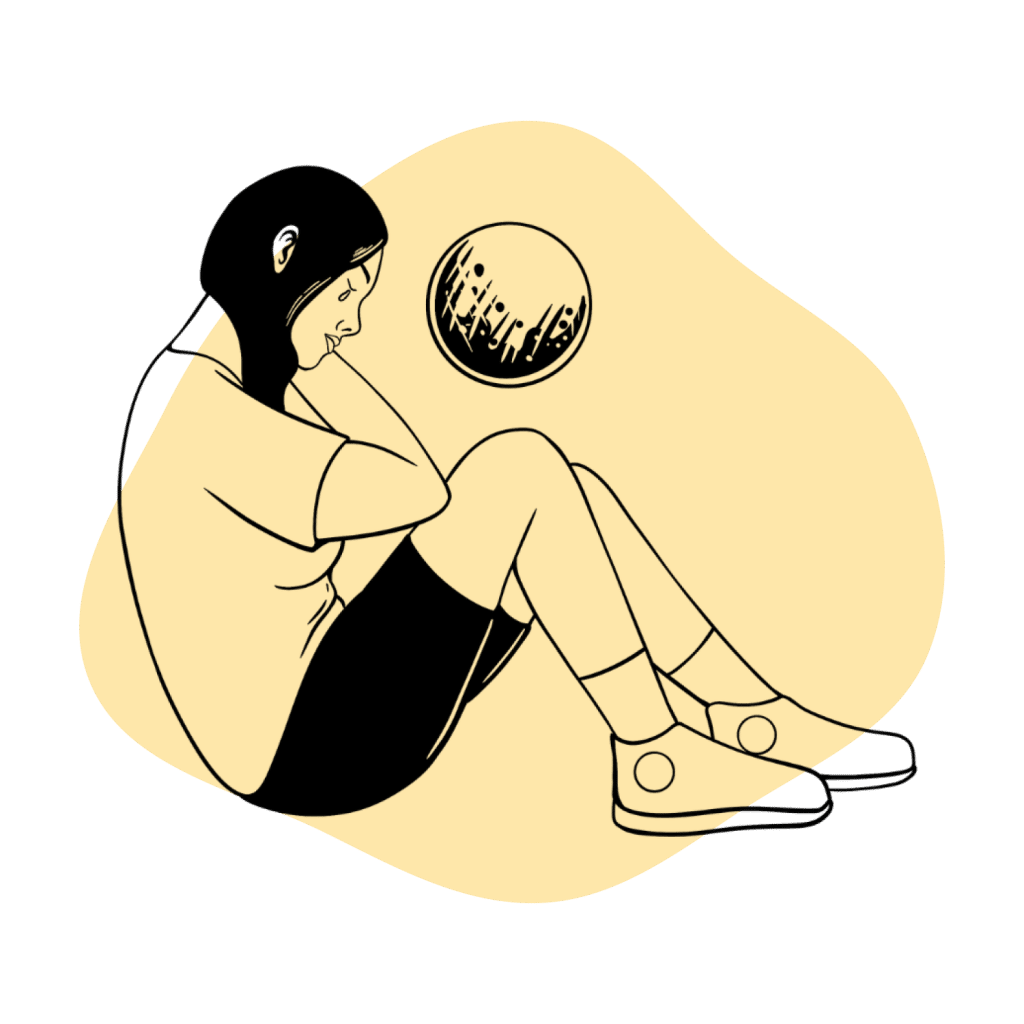
A 2020 survey by the CDC showed how, in that year, benzodiazepines played a part in over 12,290 deaths in the United States. Another study by the National Institute on Drug Abuse allows us to contextualize the benzodiazepine crisis within the larger opioid crisis. It found that benzodiazepines were discovered in 16% of overdose deaths due to opioids. These are alarming trends.
However, when it comes to determining the impact of an individual benzodiazepine on the larger situation, it’s harder to draw meaningful conclusions.
In loprazolam’s case, the potential for abuse appears to be, in relation to other benzodiazepines, much less dangerous. Studies indicate that loparzolam’s side effect profile is less harmful than that of other benzodiazepines, and the drug is usually well tolerated; discontinuation of therapy is quite rare [1].
Side Effects of Loprazolam
The most common side effect associated with loprazolam is one that is typical of hypnotic drugs: residual drowsiness.
According to UK authorities, the primary benzodiazepine-related adverse effects include:
- Headaches
- Nausea
- Drowsiness
- Hypotonia
- Blurred vision
- Ataxia
Rare adverse effects of loprazolam were:
- Depression
- Confusion
- Suicidal ideation
- Hypotension
- Gastro-intestinal disturbances
- Skin rashes
- Urinary retention
- Changes in libido
- Blood dyscrasia
- Speech disorders
Benzodiazepine Withdrawal & Dependence
Benzodiazepines, in general, have a considerable potential to cause physical dependence and withdrawal symptoms in users. In fact, when giving out benzodiazepine prescriptions, it is common practice for doctors to try limiting the treatment to the shortest time frame possible to minimize the risk of addiction.
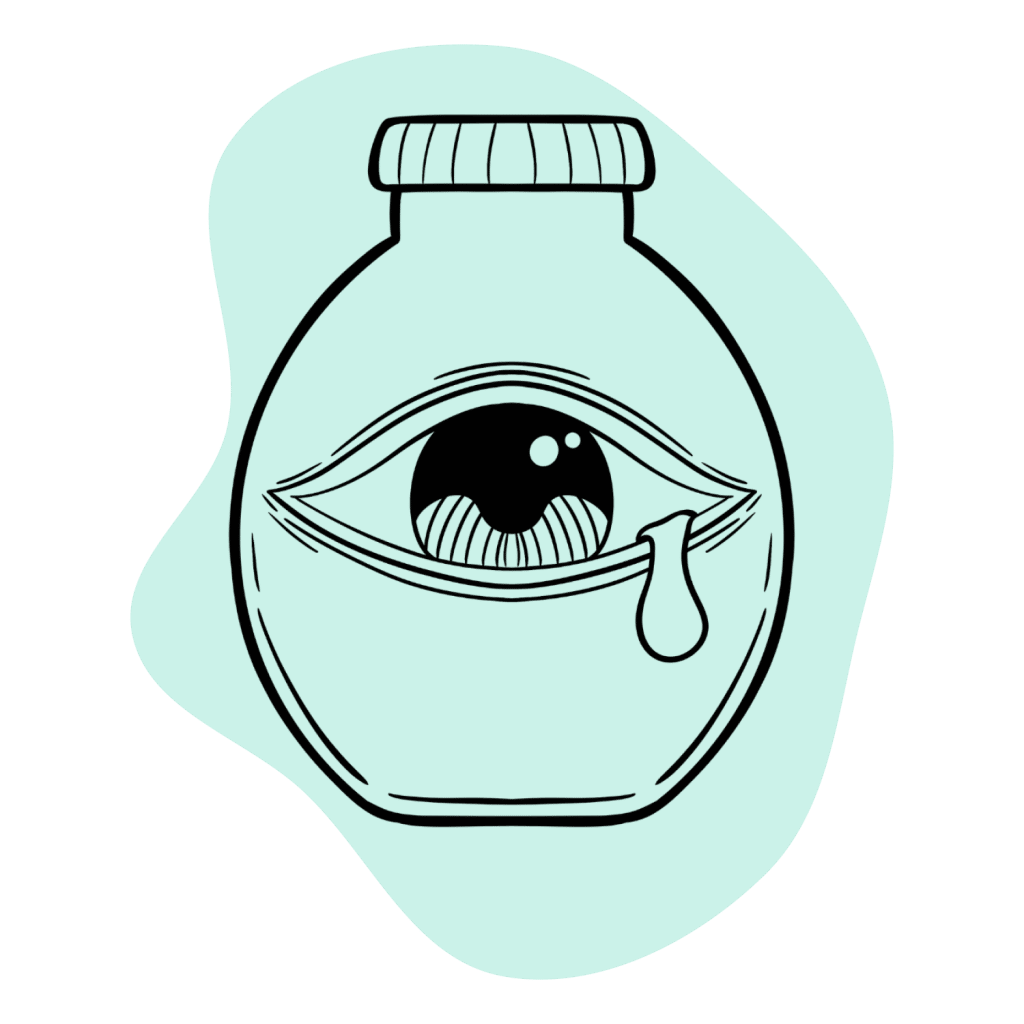
It is a common misconception that physical dependence and withdrawal symptoms develop only due to misuse. This is not correct in the slightest. Even though engaging in abuse will no doubt raise the risk of developing these conditions, a benzodiazepine user could do everything according to the prescription and still wind up with physical dependence.
Take this study, for instance. It examined the likelihood of developing dependence in patients who took benzodiazepines longer than four weeks. One-third of the participants developed an addiction and consequent withdrawal symptoms after completing treatment [3].
Once a user is physically dependent on a benzodiazepine, they have to engage in a slow drug tapering process to get off, which usually lasts about 18 weeks. Drug tapering is a safe procedure when properly administered, but complications can still develop.
When it comes to loprazolam, though, the potential to develop a benzodiazepine withdrawal appears less prevalent than other benzodiazepines. This makes sense because, as a hypnotic, loprazolam does not have the characteristics that tend to be markers for recreational use, such as a potent high, fast onset of action, etc.
Harm Reduction: Loprazolam
Before jumping for a benzodiazepine prescription, always consider the risks beforehand, like the possibility of dependence and withdrawal symptoms. Consider personal risk factors: the risk of engaging in misuse and developing an addiction is higher in patients with a history of psychiatric disorders or alcohol or drug abuse. In other words, since misuse is the biggest risk factor, users should seriously consider their capacity to use benzodiazepines appropriately.
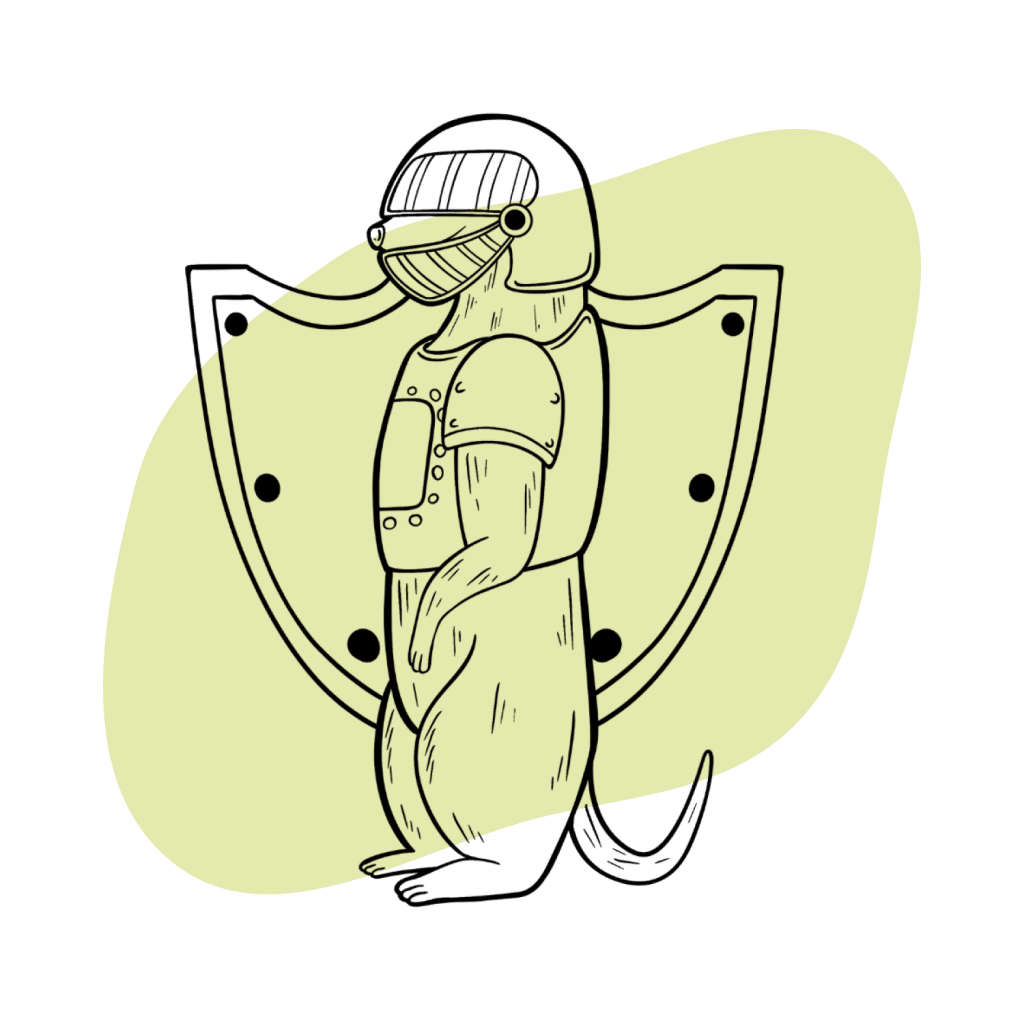
There are also important “rules” to keep in mind that can help you stay safe. For instance, when dealing with medications that can cause physical dependence, the potential to develop said conditions will always increase when higher and higher doses are used, especially over long periods.
Users can also take more practical steps to try and stay safe. We don’t condone the recreational use of benzodiazepines. Still, if this is something you already do, a smart idea would be to get a benzodiazepine receptor antagonist like flumazenil, which can work to reverse the effects of a benzodiazepine overdose. Also, make sure to ask a doctor how to apply it correctly. Organizations employing a harm reduction approach to drug abuse are usually the best places to learn this information.
Loprazolam Drug Interactions
Benzodiazepines are CNS depressants, meaning they should never be used with another CNS depressant except under instruction from a licensed physician. When two drugs have depressive effects on the CNS simultaneously, the combined effects raise the risk immensely. Respiratory depression, the leading cause of death in drug overdoses, is a typical result of using two CNS depressants at the same time.
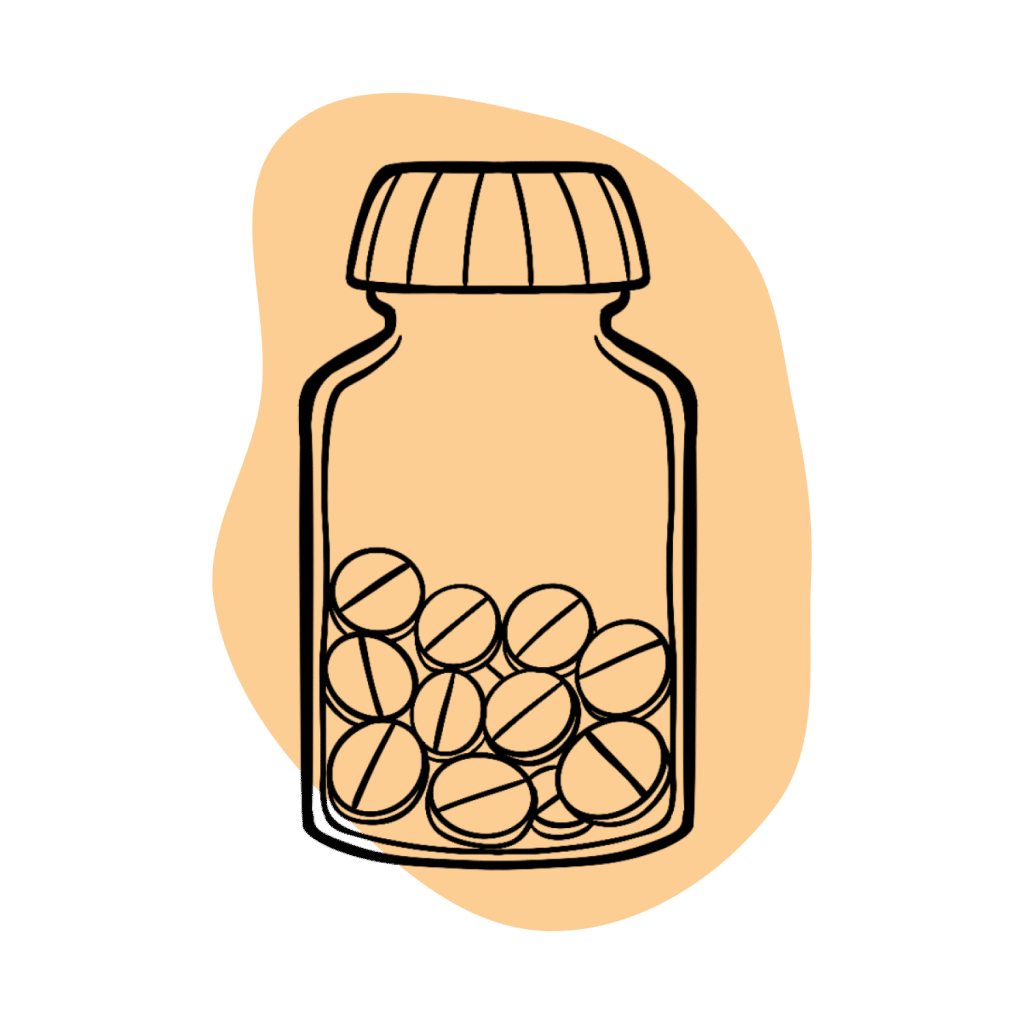
You only have to look at recent drug fatality statistics in the United States to understand how dangerous this drug interaction is. It is a combination to avoid at all costs.
CYP drug interactions are also something to be aware of.
The CYP enzyme system metabolizes the vast majority of prescription pharmacological drugs, which implies certain things. If two drugs are CYP competitors and metabolized by the same enzymes, taking them simultaneously reduces metabolic efficiency, and clearing them from the body takes longer. This can also happen if one drug happens to be a CYP inhibitor, reducing the metabolic activity.
The result of both situations is the same: reduced metabolic clearance of a drug that leads to increased levels within the body, raising the potential for adverse effects.
It can be quite dangerous if a drug is used long-term and, for some reason, an unknown drug combination affects the former drug’s metabolic clearance. The drug could slowly accumulate until it triggers a severe adverse effect.
Loprazolam Contraindications
Users should always be aware of contraindications for any drug, even for recreational purposes. Most contraindications are common sense. They relate to special statuses like hepatic and renal impairment, pregnancy, young or old population groups, etc.
The following contraindications have been identified for loprazolam [1]:
- Sensitivity to benzodiazepines
- Acute pulmonary insufficiency
- Severe respiratory insufficiency
- Myasthenia gravis
- Sleep apnea syndrome
- Depression and other related conditions
- Pregnancy
Proper Dosage
The usual dosage range for loprazolam is 0.5 mg to 2 mg (taken at bedtime or shortly before); 1 mg doses typically produce satisfactory results. However, in elderly patients, lower doses are usually recommended as they exhibit more side effects as a population group. The half-life of loprazolam has been shown to increase considerably in elderly patients [4].
Similar Benzodiazepines
As a 1,4 benzodiazepine, loprazolam is considered a “classical” benzodiazepine, meaning it falls into the same general category as most other commercially successful benzodiazepines. This determination is based on the chemical structure of the benzodiazepines and their primary mechanism of action, with classical benzodiazepines being mostly mediated by their interactions with GABA-A receptors.
However, as an imidazobenzodiazepine, loprazolam does have its particularities, mainly in how it binds to certain GABA-A receptors.
Flurazepam
Like loprazolam, flurazepam is another benzodiazepine derivative used for the treatment of sleep-related disorders. Due to their similar pharmacological profile, it is speculated that flurazepam and loprazolam have comparative interactions with GABA-A subunits. However, there are meaningful differences between them regarding their pharmacokinetics and side effects.
Flurazepam produces a metabolite with a long elimination half-life in contrast to loprazolam, which has an intermediate half-life. And in terms of side effects, it has been found that flurazepam impairs psychomotor and cognitive function to a greater degree than loprazolam [1].
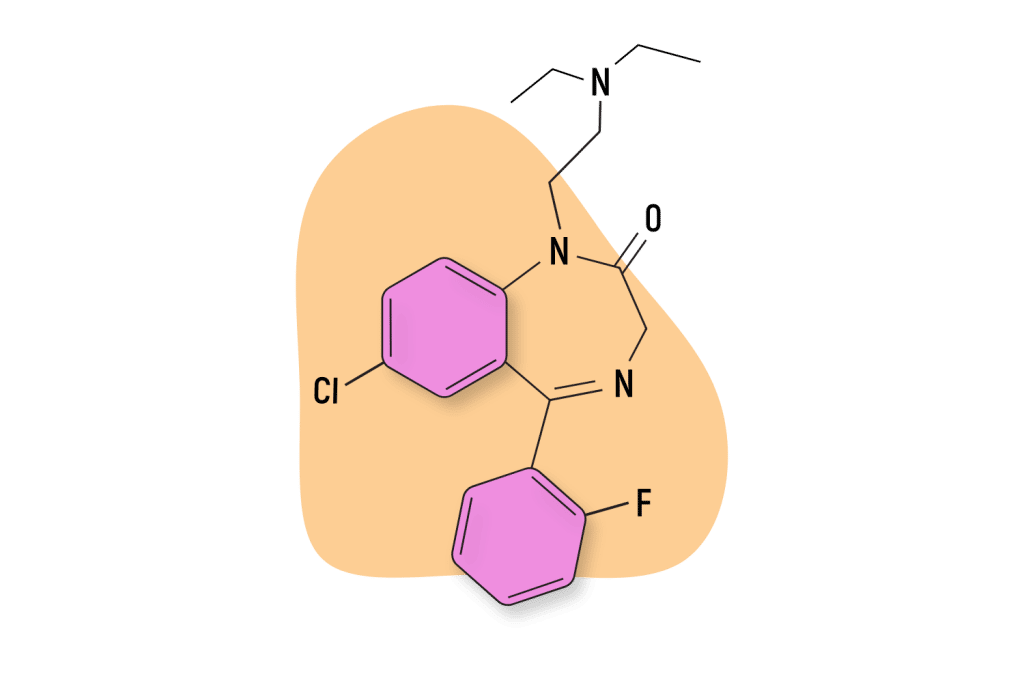
Bretazenil
Bretazenil is another benzodiazepine derivative with similar characteristics as loprazolam, although it has never been commercialized. Many benzodiazepines in the imidazobenzodiazepines class, like bretazenil, act as partial agonists, which means they cannot induce maximal activation of a receptor population, regardless of the amount of drug applied. Theoretically, this leads to a more benign side effects profile, like loprazolam.
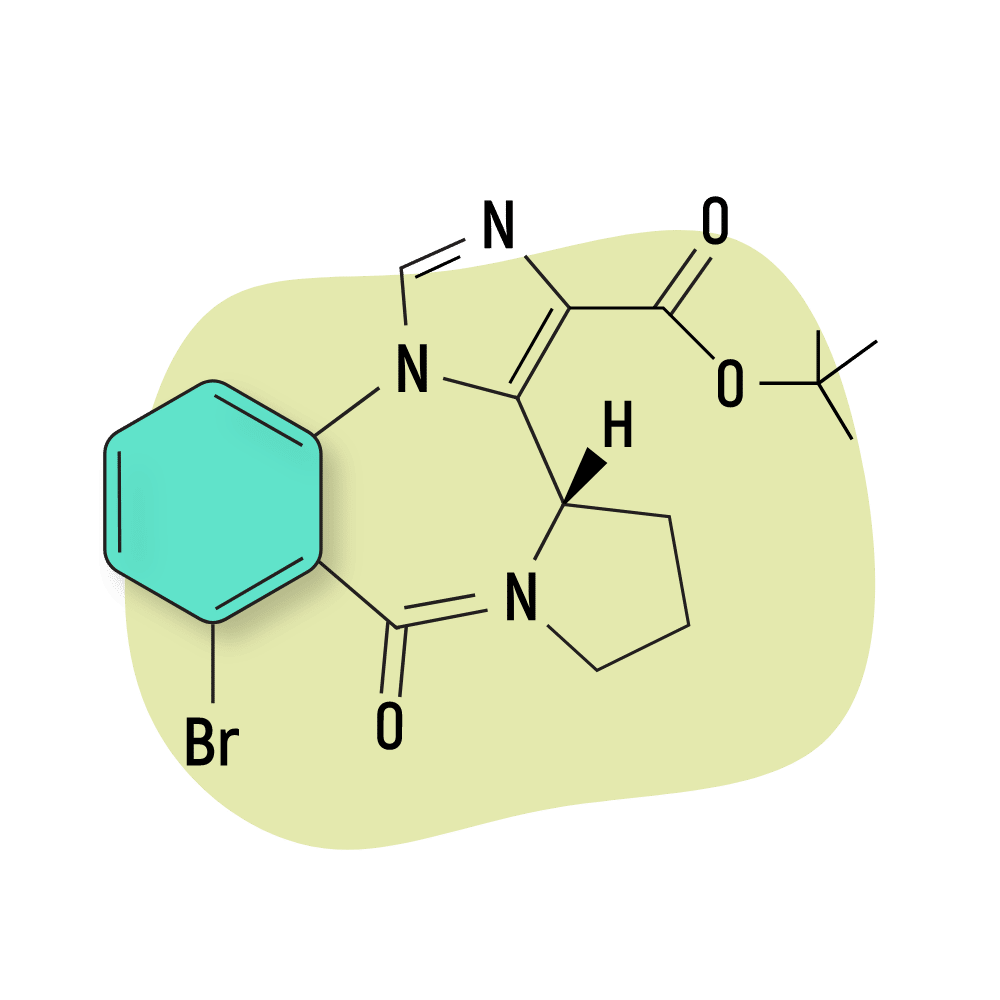
EVT-201
There is little known about EVT-201 and it has not yet been approved as a medication. However, due to its chemical structure, it is bound to have certain similarities to loprazolam. Like loprazolam, it is currently being studied for its potential to treat sleep-related conditions while offering reduced side effects.
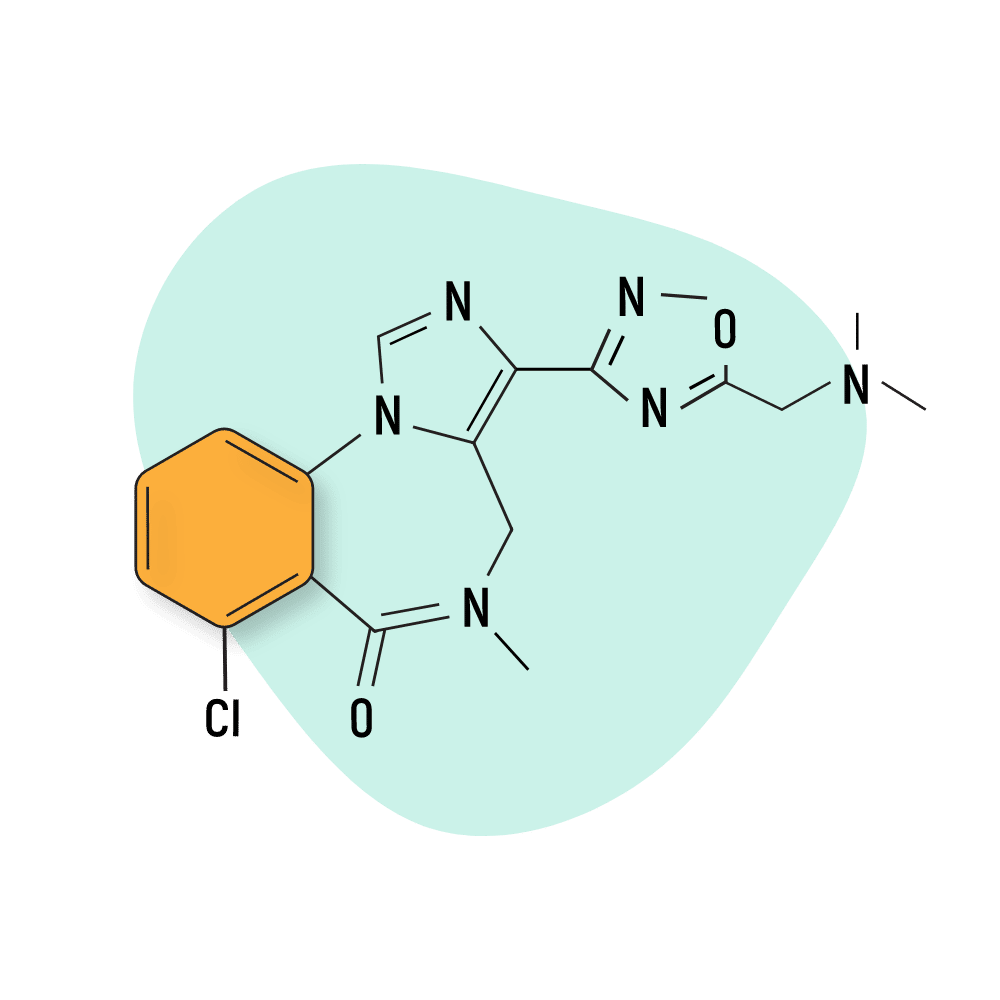
Natural Alternatives to Benzodiazepines
The kava plant is a great choice for those looking to replace pharmacological medications with all-natural, herbal options. In peer-reviewed studies, Kava is incredibly safe regarding side effects and can produce anxiolytic and sedative benefits [5].
Alternatively, users could also try the kratom plant. Kratom is a great choice because it acts similarly to opioids and has a much larger breadth of pharmacological benefits than kava. It can induce stimulant and euphoric benefits in low doses, while in mid-to-high doses, it has anxiolytic and sedative qualities. Kratom can effectively treat opioid and alcohol withdrawals, support sleep, and as a weight-loss supplement [6].
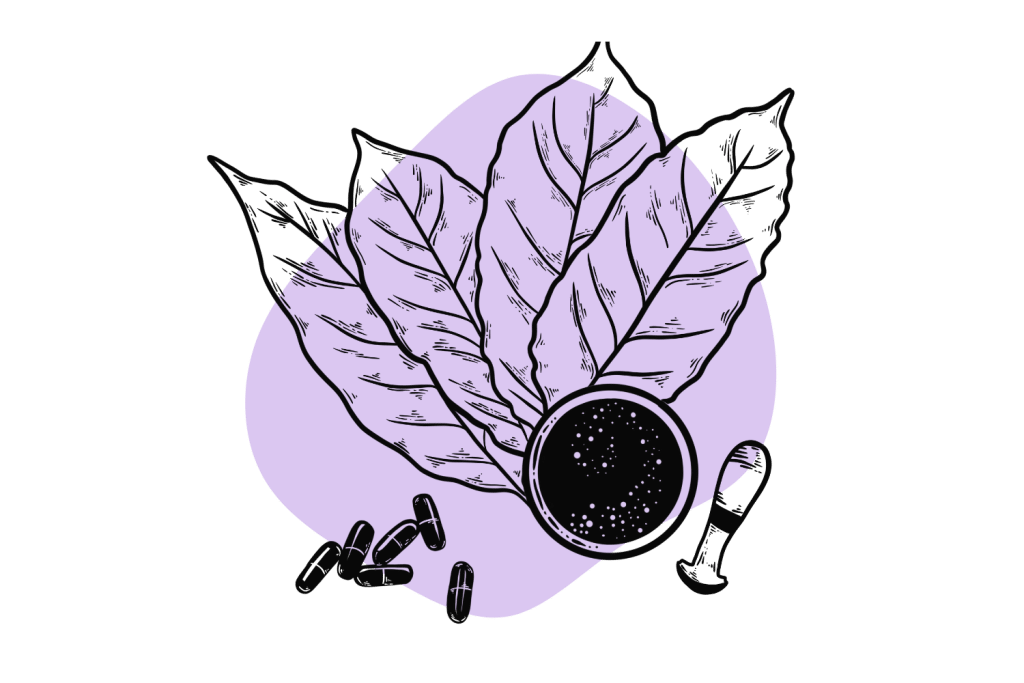
However, kratom does have the potential to cause physical dependence, so users and adverse effects, albeit to a lesser degree than pharmacological drugs, so users should still exercise caution.
Loprazolam FAQs
Is loprazolam available in the United States?
No. Loprazolam has not received FDA approval in the US.
What benefits does loprazolam offer when it comes to sleep?
Loprazolam increases total sleep time, reduces the ‘wake’ stage in stage 1 sleep, and increases stage 2 sleep. Loprazolam has minimal effects on stages 3 and 4 sleep [1].
Does loprazolam affect the elderly differently?
Yes. Studies have found that loprazolam’s effects are more pronounced in elderly patients, and the elimination half-life tends to be longer. Elimination of half-lives of up to 20 hours has been identified in elderly patients. Consequently, loprazolam is generally administered at a reduced dose for those older than 65 [4].
References
- Clark, B. G., Jue, S. G., Dawson, G. W., & Ward, A. (1986). Loprazolam. Drugs, 31(6), 500-516.
- Olsen, R. W., & Sieghart, W. (2009). GABAA receptors: subtypes provide diversity of function and pharmacology. Neuropharmacology, 56(1), 141-148.
- Riss, J., Cloyd, J., Gates, J., & Collins, S. (2008). Benzodiazepines in epilepsy: pharmacology and pharmacokinetics. Acta neurologica scandinavica, 118(2), 69-86.
- Swift, C. G., Swift, M. R., Ankier, S. I., Pidgen, A., & Robinson, J. (1985). Single dose pharmacokinetics and pharmacodynamics of oral loprazolam in the elderly. British journal of clinical pharmacology, 20(2), 119-128.
- Cairney, S., Clough, A. R., Maruff, P., Collie, A., Currie, B. J., & Currie, J. (2003). Saccade and cognitive function in chronic kava users. Neuropsychopharmacology, 28(2), 389-396.
- Swogger, M. T., & Walsh, Z. (2018). Kratom use and mental health: A systematic review. Drug and Alcohol Dependence, 183, 134-140.

